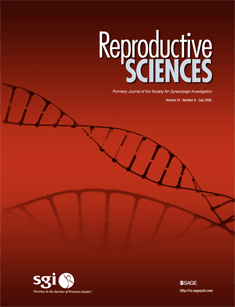
CRYOLETTERS
Scope & Guideline
Connecting researchers to propel cryobiological advancements.
Introduction
Aims and Scopes
- Cryopreservation Techniques:
The journal covers various cryopreservation methods, including vitrification and freezing protocols, assessing their effectiveness on different biological materials such as sperm, oocytes, tissues, and seeds. - Biological Responses to Cryostress:
Research published often investigates how biological entities respond to cryogenic conditions, including cellular and molecular mechanisms of damage and repair, which are crucial for improving preservation outcomes. - Cryoprotectants and Additives:
Studies on the development and optimization of cryoprotective agents and additives to enhance the viability and functionality of preserved biological samples are a core focus. - Applications in Reproductive Biology:
The journal features significant contributions to reproductive biology, particularly in the cryopreservation of gametes and embryos from various species, aimed at improving fertility and conservation efforts. - Plant Cryobiology:
CRYOLETTERS also addresses plant cryopreservation techniques, exploring methods for preserving germplasm and the impacts of freezing on plant tissues and seeds. - Innovations in Cryobiotechnology:
The journal includes articles on novel technologies and methodologies in cryobiology, such as the use of nanoparticles, hydrogels, and advanced cryodevices.
Trending and Emerging
- Nanotechnology in Cryopreservation:
Recent publications have increasingly explored the use of nanoparticles and nanomaterials as cryoprotectants, indicating a trend towards integrating nanotechnology to enhance the efficacy of cryopreservation. - Environmental and Ecological Considerations:
There is a growing body of research focused on the ecological impacts of cryopreservation, particularly concerning conservation efforts for endangered species and plant germplasm, highlighting the journal's commitment to environmental sustainability. - Interdisciplinary Approaches:
An emerging trend is the incorporation of interdisciplinary methodologies, combining insights from molecular biology, materials science, and bioengineering to innovate cryopreservation techniques and improve biological outcomes. - Focus on Cellular Mechanisms and Biomarkers:
There is an increased emphasis on understanding the cellular and molecular mechanisms underlying cryodamage and recovery, including the identification of biomarkers that can predict success in cryopreservation. - Applications in Regenerative Medicine:
Growing interest in the applications of cryopreservation in regenerative medicine and tissue engineering is evident, with studies exploring the preservation of stem cells and engineered tissues for therapeutic purposes.
Declining or Waning
- Traditional Freezing Methods:
There has been a noticeable decrease in studies solely focusing on traditional slow freezing techniques, as newer methods like vitrification gain popularity and demonstrate superior outcomes. - Basic Cryobiology without Technological Advances:
Research that does not incorporate recent technological advancements or innovative methodologies in cryopreservation is less frequently published, indicating a shift towards more applied and technology-driven studies. - Animal-Specific Studies:
There seems to be a waning interest in cryopreservation studies limited to specific animal species, with a broader focus now being placed on comparative studies across multiple species or on more universal applications. - Single-Factor Studies:
Research focusing solely on one variable in cryopreservation outcomes is declining, as multi-factorial studies that examine interactions between various elements (e.g., cryoprotectants, freezing rates, and biological responses) are increasingly favored.
Similar Journals

JOURNAL OF ASSISTED REPRODUCTION AND GENETICS
Exploring Breakthroughs in Assisted ReproductionThe Journal of Assisted Reproduction and Genetics, published by Springer/Plenum Publishers, serves as a pivotal platform for innovative research and advancements in the fields of reproductive medicine, genetics, and developmental biology. With an impact factor that positions it within the upper echelon of its categories—including Q1 rankings in Obstetrics and Gynecology and Reproductive Medicine—this journal plays a critical role in disseminating high-quality, peer-reviewed studies that significantly influence clinical practices and research directions. Renowned for its commitment to enhancing understanding in areas such as assisted reproductive technologies, genetic screening, and reproductive health, the journal attracts contributions from leading experts worldwide. With a broad scope encompassing original research, case studies, and comprehensive reviews, the Journal of Assisted Reproduction and Genetics continues to be an essential resource for researchers, healthcare professionals, and students dedicated to the advancement of reproductive sciences.

Cell Reports Methods
Transforming Research with Innovative MethodologiesCell Reports Methods is a cutting-edge journal published by CELL PRESS, focusing on innovative methodologies in the vast fields of biochemistry, genetics, biotechnology, and radiological sciences. Launched in 2021, it has rapidly ascended to attain a Q1 ranking across multiple disciplines in the latest 2023 metrics, reflecting its influential contribution to the scientific community. With an emphasis on practical and rigorous experimental approaches, this journal serves as a vital resource for researchers looking to advance their methodologies and collaborate on significant findings in their respective specialties. Despite not being an open-access publication, Cell Reports Methods ensures broad accessibility through institutional subscriptions, allowing researchers from various backgrounds to engage with high-quality scholarly work. The journal presents a unique platform for sharing insights from interdisciplinary methods that foster innovation and discovery, ultimately shaping the future of scientific research.

NATURE REVIEWS MOLECULAR CELL BIOLOGY
Navigating the landscape of cellular processes and innovations.NATURE REVIEWS MOLECULAR CELL BIOLOGY, published by NATURE PORTFOLIO, stands as a seminal journal in the fields of cell and molecular biology, with a significant impact factor that underscores its influence and reputation within the scientific community. Established in 2000 and continuing its legacy into 2024, this journal delivers comprehensive reviews that synthesize current knowledge and advancements in molecular and cellular processes. Respected for its high-quality articles, it has maintained a prestigious Q1 ranking in both Cell Biology and Molecular Biology categories as of 2023. With an exceptional Scopus ranking, taking the top position in its category, it attracts a readership of prominent researchers, professionals, and students eager to stay abreast of groundbreaking discoveries and methodologies. Although it does not offer Open Access, subscribers benefit from exclusive access to vital insights that foster innovative research approaches and advancements in the life sciences. The journal’s objective is to bridge the gap between research and application, providing indispensable resources to its audience while contributing to the global conversation on molecular and cellular biology.

Cold Spring Harbor Perspectives in Biology
Catalyzing Knowledge in Molecular Biology and BeyondCold Spring Harbor Perspectives in Biology is a prestigious academic journal published by COLD SPRING HARBOR LAB PRESS that serves as a vital resource in the fields of Biochemistry, Genetics, and Molecular Biology. With an impressive impact factor and categorized in the Q1 quartile for its contributions, this journal is renowned for curating comprehensive reviews that synthesize the latest advancements and ongoing research in these dynamic and interconnected disciplines. Since its inception in 2009, the journal has played a pivotal role in advancing scientific knowledge through high-quality articles that cater to researchers, professionals, and students alike. Although it operates on a traditional subscription model, its contributions are indispensable for those seeking to remain at the forefront of biological research and its myriad applications. With a commendable ranking of #19 out of 221 in general biochemistry, genetics, and molecular biology on Scopus, this journal ensures that its readers have access to cutting-edge insights and a rigorous academic discourse.

SEMINARS IN REPRODUCTIVE MEDICINE
Empowering Research, Enhancing PracticeSEMINARS IN REPRODUCTIVE MEDICINE is a leading peer-reviewed journal dedicated to exploring the complexities of human reproduction, offering insightful perspectives that encompass advances in reproductive endocrinology, obstetrics, and gynecology. Published by THIEME MEDICAL PUBL INC, this esteemed journal holds a notable spot in multiple Scopus categories, ranking 21st in Reproductive Medicine and 38th in Obstetrics and Gynecology, with an impressive impact in the Q1 and Q2 quartiles. With its commitment to high-quality research and clinical implications, the journal serves as a vital resource for practitioners, researchers, and students alike, fostering an environment of innovation and collaboration in the rapidly evolving reproductive health landscape. SEMINARS IN REPRODUCTIVE MEDICINE also offers convenient open access options, ensuring that its contributions are readily available to the global academic community. For over two decades, from its establishment in 1999 to the present, it has retained a pivotal role in disseminating critical findings that inform both clinical practice and future research efforts.

JOURNAL OF REPRODUCTION AND DEVELOPMENT
Fostering innovation in animal sciences.JOURNAL OF REPRODUCTION AND DEVELOPMENT, published by the SOCIETY REPRODUCTION & DEVELOPMENT-SRD in Japan, is a leading peer-reviewed journal dedicated to advancing the field of reproduction and development in animal sciences. With a notable impact factor reflected in its prestigious Q1 Quartile ranking in Animal Science and Zoology, the journal aims to disseminate cutting-edge research that explores the complexities of reproductive biology, developmental processes, and their implications for agriculture and biodiversity. This journal invites contributions that span multidisciplinary interests, thereby facilitating the integration of scientific knowledge and practical applications. Researchers, professionals, and students can benefit from the insights shared within its pages, as it strives to foster collaboration and innovation in the field. The journal’s comprehensive scope and esteemed reputation, underscored by its Scopus rank of #115 out of 490 in the category, make it an invaluable resource for anyone invested in the study of reproduction and development.

ZYGOTE
Exploring the Intricacies of Life's Building Blocks.ZYGOTE is a prominent academic journal published by Cambridge University Press, focusing on the fields of Cell Biology and Developmental Biology. Established in 1993, this journal serves as a platform for high-quality research that advances our understanding of the complex processes that underlie cellular and developmental mechanisms. While currently classified in the Q4 quartile for both fields, ZYGOTE provides valuable insights and contributions from early-stage research to established studies, making it a noteworthy resource for researchers and professionals seeking to explore innovative developments in biology. Although it does not offer open access, the journal maintains rigorous peer-review standards to ensure the integrity and relevance of the published work. With its ongoing commitment to disseminating knowledge, ZYGOTE plays a significant role in the scientific community, fostering collaboration and inspiration among students, researchers, and professionals alike.

Biophysical Reviews
Connecting Research and Innovation in Biophysical StudiesBiophysical Reviews, published by SpringerNature, is a leading international journal focused on the interdisciplinary areas of biophysics, structural biology, and molecular biology. With an impressive 2023 impact factor, the journal ranks in the Q1 category for biophysics and is also highly regarded in structural and molecular biology, reflecting its commitment to advancing understanding in these critical fields. Operating since 2009 and converging toward its goal of comprehensive coverage by 2024, Biophysical Reviews provides a platform for researchers to share innovative insights and critical reviews that shape the future of biophysical sciences. Its rigorous peer-review process ensures high-quality publications that are closely monitored within the academic community, making it an essential resource for researchers, professionals, and students aiming to stay at the forefront of biophysical research. Access options are available for enhancing the dissemination of knowledge, supporting a broad audience dedicated to scientific excellence.

Reproductive Sciences
Leading the Way in Reproductive Health InnovationsReproductive Sciences is a premier journal published by SPRINGER HEIDELBERG, dedicated to the field of obstetrics and gynecology. With its ISSN 1933-7191 and E-ISSN 1933-7205, the journal has established itself as a leading source of high-quality research and clinical insights since its inception in 2007, and continues to converge its scope into 2024. Currently ranked in the Q1 category for obstetrics and gynecology, it holds the 43rd position among 209 journals in the Scopus rankings, underscoring its influence and relevance within the medical community. This journal is particularly dedicated to advancing knowledge in reproductive health, providing a platform for innovative research and clinical practices through both traditional and open access options. Located in Switzerland with an address in Heidelberg, Germany, Reproductive Sciences is not just a publication; it is a vital resource for researchers, professionals, and students seeking to make impactful contributions to the field of reproductive health.

Molecular Systems Biology
Pioneering Open Access for Global Scientific DialogueMolecular Systems Biology, published by SpringerNature, is a premier open access journal that has been a cornerstone in advancing the fields of biological science since its inception in 2005. With its ISSN 1744-4292, this journal exemplifies high scholarly standards, boasting an impressive suite of impact factors, including Q1 rankings across various disciplines such as Agricultural and Biological Sciences, Biochemistry, Genetics and Molecular Biology, and more, highlighting its significant contribution to the scientific community. The journal offers robust access options to facilitate innovative research dissemination, reaching a global audience while maintaining a commitment to fostering collaboration and dialogue among researchers, professionals, and students. With a focus on integrating quantitative approaches to biological systems, Molecular Systems Biology plays a vital role in addressing complex biological questions, paving the way for groundbreaking discoveries and advancements in healthcare, environmental sustainability, and functional genomics.